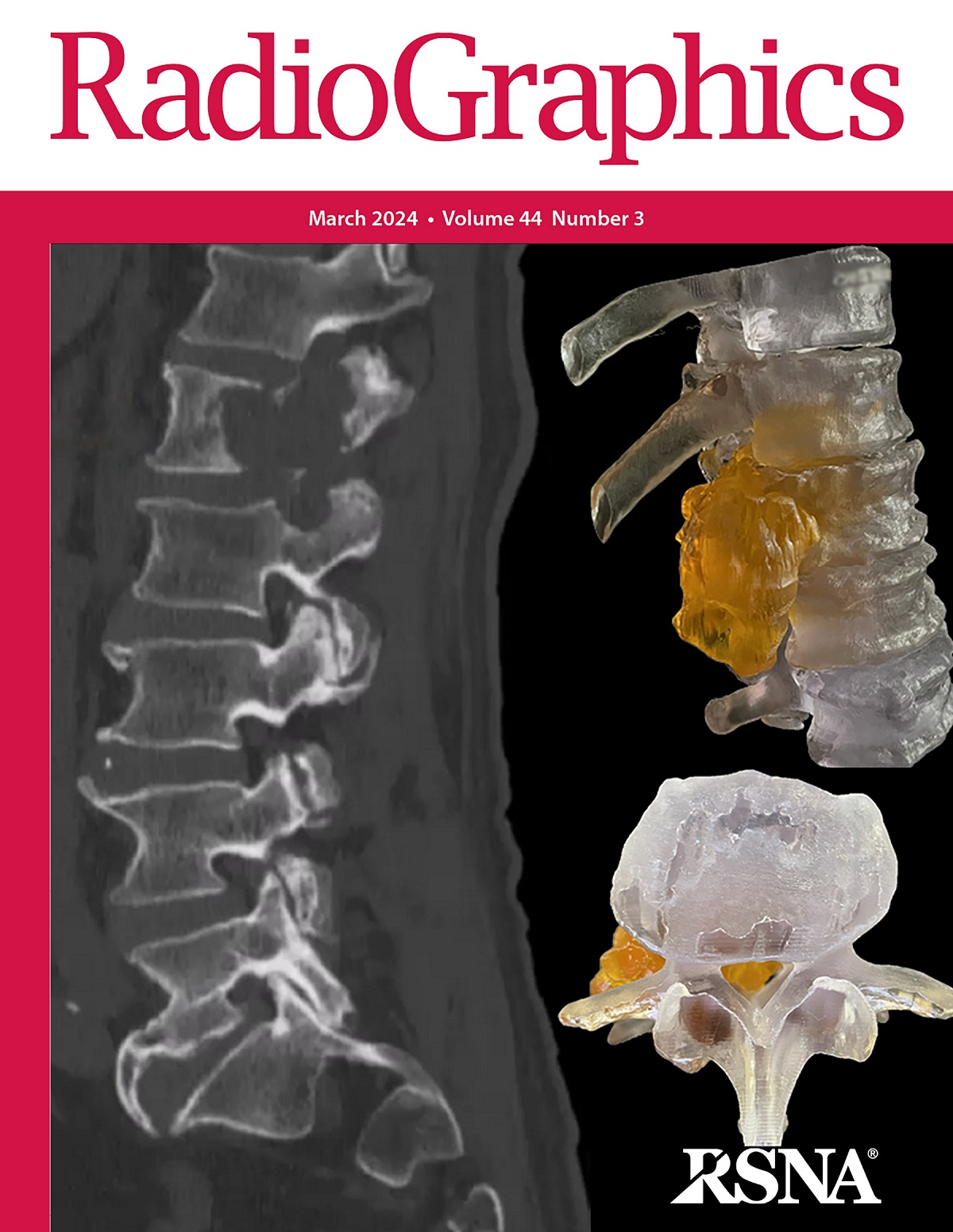求助PDF
{"title":"Image-guided Interventions for Core Muscle Injury and Other Disorders in the Pubic Symphysis.","authors":"Dyan V Flores, Juvel Lee, Timothy Murray","doi":"10.1148/rg.240148","DOIUrl":null,"url":null,"abstract":"<p><p>Formerly termed <i>sports hernia</i> or <i>athletic pubalgia</i>, core muscle injury (CMI) encompasses abnormality of structures within the so-called core, which is essentially the hip, abdomen, and pubis. Compared with data on image-guided procedures of other joints, information regarding procedures performed to address CMI and other disorders of the pubic symphysis is lacking. These procedures can be daunting given the joint's small size, surrounding critical neurovascular structures, and three-dimensional anatomy. Nonetheless, various diagnostic and therapeutic image-guided interventions in this region can be successfully performed by the astute radiologist. Diagnostic symphyseography provides a contrast agent map that allows detection of symphyseal cleft injuries. Although largely supplanted with MRI, which can help depict additional findings such as bone marrow edema and atypical cleft injuries, symphyseography performed alongside local anesthetic and steroid injection remains a valuable conservative therapeutic strategy in the treatment of CMI. US-guided percutaneous dry needling (tenotomy) is thought to promote tendon healing by using repeated needle passage to convert chronic degeneration of tendinosis into an acute inflammatory condition; the distal rectus abdominis and/or proximal adductor longus may be targeted. Other perisymphyseal procedures include joint aspiration, biopsy, and osteoplasty. Fluoroscopic- or US-guided joint aspiration aids in evaluation of arthropathies. While bone and soft-tissue biopsies are best performed under CT guidance, fluoroscopy and US are viable alternatives in the evaluation of lesions with significant extraosseous components. Percutaneous osteoplasty is a minimally invasive palliative procedure that stabilizes pubic metastases by injecting bone cement; it can be performed under fluoroscopic or CT guidance by itself or with thermal ablation to maximize pain relief. <sup>©</sup>RSNA, 2025 Supplemental material is available for this article.</p>","PeriodicalId":54512,"journal":{"name":"Radiographics","volume":"45 2","pages":"e240148"},"PeriodicalIF":5.2000,"publicationDate":"2025-02-01","publicationTypes":"Journal Article","fieldsOfStudy":null,"isOpenAccess":false,"openAccessPdf":"","citationCount":"0","resultStr":null,"platform":"Semanticscholar","paperid":null,"PeriodicalName":"Radiographics","FirstCategoryId":"3","ListUrlMain":"https://doi.org/10.1148/rg.240148","RegionNum":1,"RegionCategory":"医学","ArticlePicture":[],"TitleCN":null,"AbstractTextCN":null,"PMCID":null,"EPubDate":"","PubModel":"","JCR":"Q1","JCRName":"RADIOLOGY, NUCLEAR MEDICINE & MEDICAL IMAGING","Score":null,"Total":0}
引用次数: 0
引用
批量引用
Abstract
Formerly termed sports hernia or athletic pubalgia , core muscle injury (CMI) encompasses abnormality of structures within the so-called core, which is essentially the hip, abdomen, and pubis. Compared with data on image-guided procedures of other joints, information regarding procedures performed to address CMI and other disorders of the pubic symphysis is lacking. These procedures can be daunting given the joint's small size, surrounding critical neurovascular structures, and three-dimensional anatomy. Nonetheless, various diagnostic and therapeutic image-guided interventions in this region can be successfully performed by the astute radiologist. Diagnostic symphyseography provides a contrast agent map that allows detection of symphyseal cleft injuries. Although largely supplanted with MRI, which can help depict additional findings such as bone marrow edema and atypical cleft injuries, symphyseography performed alongside local anesthetic and steroid injection remains a valuable conservative therapeutic strategy in the treatment of CMI. US-guided percutaneous dry needling (tenotomy) is thought to promote tendon healing by using repeated needle passage to convert chronic degeneration of tendinosis into an acute inflammatory condition; the distal rectus abdominis and/or proximal adductor longus may be targeted. Other perisymphyseal procedures include joint aspiration, biopsy, and osteoplasty. Fluoroscopic- or US-guided joint aspiration aids in evaluation of arthropathies. While bone and soft-tissue biopsies are best performed under CT guidance, fluoroscopy and US are viable alternatives in the evaluation of lesions with significant extraosseous components. Percutaneous osteoplasty is a minimally invasive palliative procedure that stabilizes pubic metastases by injecting bone cement; it can be performed under fluoroscopic or CT guidance by itself or with thermal ablation to maximize pain relief. © RSNA, 2025 Supplemental material is available for this article.


